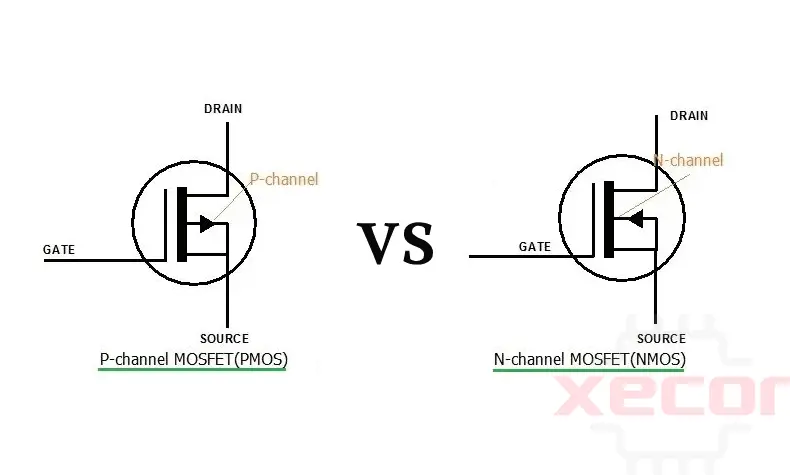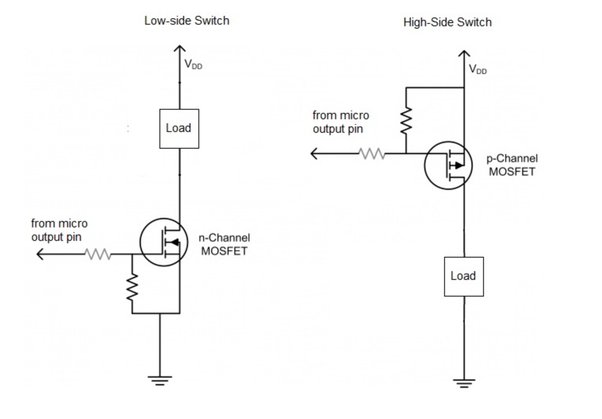[Body]

Alright, let’s gab about these N-channel and P-channel MOSFET thingamajigs. Now, I ain’t no fancy engineer, but I’ll tell ya what I know in plain English, the way I understand it.
First off, we got these N-channel MOSFETs. Think of ’em like little light switches, but instead of your finger, they use electricity to turn on and off. To get ’em workin’, you gotta give ’em a positive jolt of electricity – kinda like pushin’ the “on” button, but with a positive charge. They’re real good at lettin’ the electricity flow, like water through a pipe, and they don’t get too hot doin’ it. Electron flow, they call it. Faster and easier, like water flowin’ downhill.
- Easy to turn on, just need that positive juice.
- Good at lettin’ the electric stuff flow, not much fuss.
- Don’t get too hot, which is always a good thing.
Now, these P-channel MOSFETs, they’re a bit different. They’re like those switches that you gotta pull up instead of push down. You gotta give ’em a negative jolt to get ’em goin’. It’s like pullin’ somethin’ instead of pushin’ it. And, well, they ain’t as good at lettin’ the electricity flow as the N-channel ones. They use somethin’ called “hole flow,” which is kinda like the water flowin’ uphill, a bit slower and more of a struggle. And because of that, they get hotter, specially when they’re workin’ hard.
So, why would anyone use the P-channel ones if they ain’t as good? Well, sometimes you need that “pull up” kinda switch, you see? They call it a “high side switch” – fancy words for somethin’ that sits on the top side of the circuit, controllin’ the power flow. Imagine you have a light bulb and a battery. The N-channel is good for controllin’ the ground wire, the wire that goes back to the battery, but sometimes you want to control the wire comin’ from the battery to the lightbulb. That’s where the P-channel comes in handy.
Here’s a little table, to make it clearer. I seen these tables in those fancy magazines my grandson reads. Always thought they was a good way of explainin’ things, even to an old woman like me:
| Feature | N-Channel MOSFET | P-Channel MOSFET |
|---|---|---|
| To Turn On | Positive voltage | Negative voltage |
| Electricity Flow | Good, like water downhill | Not so good, like water uphill |
| Getting Hot | Not too hot | Gets hotter |
| Good For | Ground side switches, general use | High side switches, special cases |
Now, the fella at the hardware store told me that the N-channel ones are way more common. Makes sense, since they’re easier to work with and more efficient, like I said before. But the P-channel ones, they got their place, you know? It’s like havin’ both a hammer and a screwdriver in your toolbox. You need both for different jobs.
And get this, them smart fellas figured out that the electrons in the N-channel move faster than the holes in the P-channel, like two or three times faster! That’s why the N-channel is better at lettin’ the electricity flow and don’t get so hot. The holes, well, they’re kinda sluggish, like me on a cold mornin’.
So, when you’re lookin’ at these MOSFETs, just remember: N-channel for easy flow and positive juice, P-channel for pull-up switches and negative juice. And don’t get too hung up on the fancy words, it’s just electricity doin’ its thing, like water flowin’ through pipes, sometimes easy, sometimes not so easy.
In the end, it all boils down to what you need ’em for. It’s like choosin’ between a tractor and a pickup truck. Both are good for somethin’, but you gotta pick the right one for the job. And that’s all there is to it, simple as that.
I hope this made some sense to ya. I ain’t no teacher, but I tried my best to explain it like I understand it. Now, if you’ll excuse me, I gotta go check on my chickens.

Tags: MOSFET, N-channel, P-channel, transistor, electronics, switch, high-side switch, low-side switch, voltage, current, electron flow, hole flow

